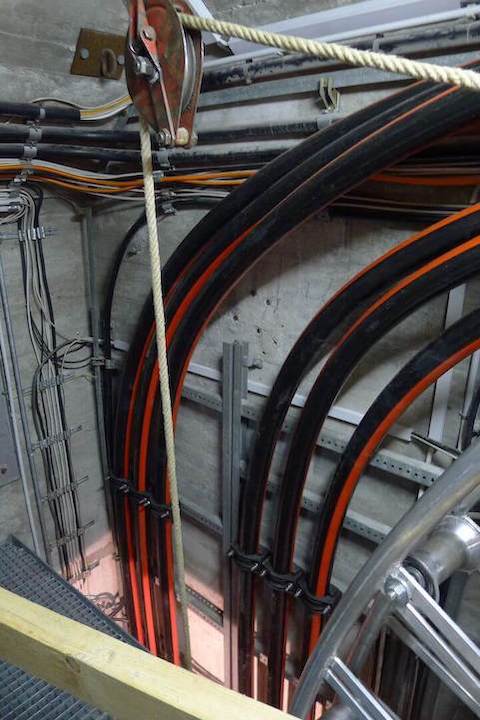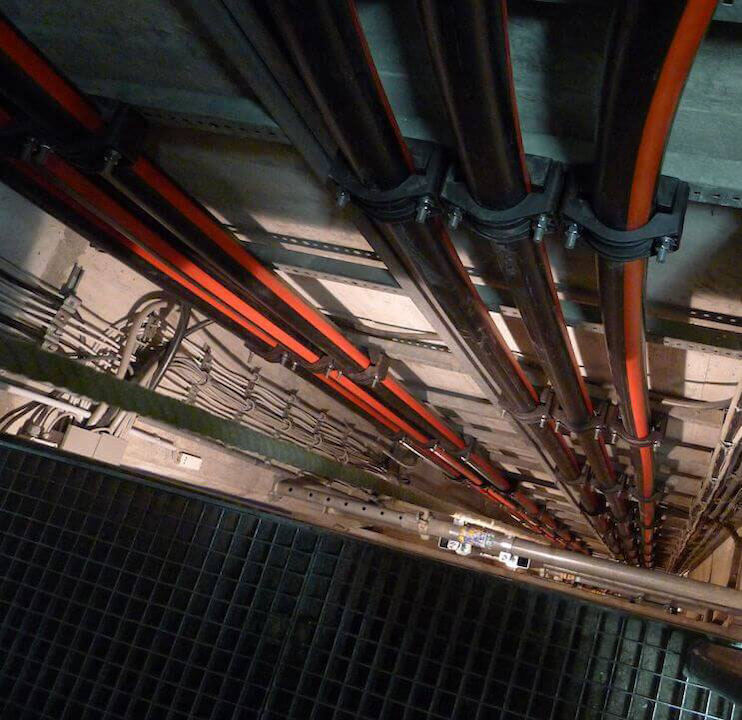The installation of HV cables in vertical shafts is very dangerous. You must be fully aware of the risks involved and the installation must be handled by professionals. The Cableizer cable pulling module cannot be used to determine if it’s safe or not.
Posted 2020-12-22
Categories: User guides
Cable pulling in vertical shafts is very dangerous and we strongly advise you to get professional help from an installation company with references in similar projects. Vertical installations are clearly beyond the scope of the Cableizer cable pulling module and you cannot use these calculations to determine if it’s safe or not. The Cableizer cable pulling module is made for typical installations in terrain.
Typical applications of vertical cable installations are connections to hydro power generation plants in a cavern, underground mining applications, open pit mines, high-rise buildings, or submarine crossings. Various publications are available in the field such as "500kV Aluminum-Sheathed XLPE Cable in a 96m Vertical Shaft" published in the Hitachi Cable Review No.18 (October 1999). Installations can be in a straight rigid vertical configuration, or in a more complicated flexible/snaked vertical configuration.
For cable pulling in vertical shafts, you have to consider the weight of the cable hanging in the shaft. You also have to consider the force the cable can withstand so it will not rupture (consider additional steel wires and/or pulling grip/sock). It's also mandatory that you have some kind of fail-safe breaking mechanism to prevent the cable from free fall in case of a potential rupture of the pulling steel wires. This is very important because as soon as gravitational force is higher than friction nothing is going to hold the cable and it will accelerate and crash down into the shaft. This is extremely dangerous for the installation crew.
There are different ways to do such an installation, for example using a second steel wire for breaking or by pushing instead of pulling the cable using multiple synchronized cable pushers along the way (including in the shaft). Generally, it is easier to pull the cable up instead of down, but depending on the installation that is not always an option.
Once you have the cable in place, you need to have a proper fixation including proper snaking of the cable. When you use metal structures in the shaft to fixate the cable you must make sure there are no closed loops of ferromagnetic steel.
|
Please make sure that your cable is suitable for vertical installation:
|
Hi-Tensile Verlok® Vertical Mineshaft/Borehole Cable, Image courtesy of United Wire & Cable. |
Installation and cable laying must be well planned beforehand. Braavos has been involved in projects with vertical cable pulling and can get you in contact with experts in the field, if necessary.
The following pictures show the vertical shaft in the hydro power plan of the Rheinkraftwerk Säckingen in Germany.

|

|
| Transition to vertical shaft | Installation in shaft |